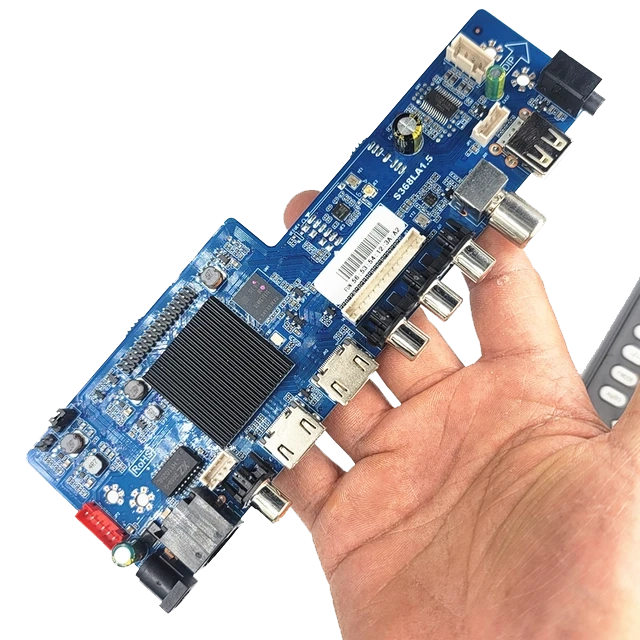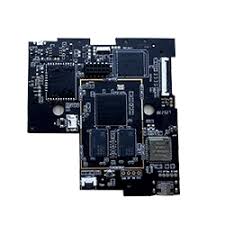
Launch into the realm of Android application engineering for compact board computers. This exhaustive guide will arm you with the primary ideas and practical steps to competently create your own Android-fueled SBC operations. From learning the basic principles of Android programming to investigating elaborate world of SBC equipment, this guide will support your a fruitful project development.
- Explore the diverse of available SBC platforms and their individual capabilities.
- Perfect essential Android development tools, including Android Studio, SDKs, and emulators.
- Learn the intricacies of arranging your SBC platform for seamless Android functionality.
Explore best practices for formulating robust and durable Android tools tailored for SBC hardware constraints.
Developing Android Applications on an SBC
Employing efficiency of a Single Board Computer (SBC) for Android application programming is an increasingly common approach. These compact and versatile tools provide a cost-effective base for creation, enabling creators to tap into the capabilities of Android without the need for a traditional workstation. By utilizing the SBC's resources such as its processor, memory, and connectivity options, developers can create Android applications that range from simple utilities to more complex systems. The competence to customize the hardware and software environment further amplifies the flexibility of SBCs for Android development, making them a instrumental tool for both students.
Harnessing Android Development Boards for IoT
For budding technicians delving into the world of Internet of Things (IoT), Android dev boards present a versatile platform to bring their cutting-edge ideas to life. These handy boards, often equipped with comprehensive hardware and straightforward software development kits (SDKs), provide a trustworthy foundation for launching a wide range of IoT applications. From home management systems to technical monitoring systems, Android dev boards empower collectives to establish cutting-edge IoT projects with efficiency.
- Employing the extensive Android ecosystem, developers can tap into a vast library of resources specifically designed for IoT projects. This variety of resources allows for enhanced development and boosts the creation of innovative IoT solutions.
- Also, Android dev boards often feature preinstalled connectivity options such as Wi-Fi, Bluetooth, and cellular, facilitating seamless transmission with other devices and cloud platforms. This connectivity capability is necessary for enabling real-time data handling and remote observation of IoT platforms.
- Additionally, the shared frameworks of Android dev boards fosters a thriving ecosystem of developers, providing ample guidance for tackling any challenges encountered during the development process.
Analyzing Android SBC Capabilities for Media
The world of multimedia applications is constantly developing, pushing the boundaries of what's doable. In this dynamic landscape, Android System-on-Chips (SBCs) have emerged as a robust strategy for developers seeking to develop innovative and engaging experiences.
These compact yet well-furnished SBCs present a rare blend of processing capacity, connectivity, and multimedia strengths that make them fitting for a wide collection of applications.
From high-definition video playback to on-the-fly audio processing, Android SBCs are outfitted to handle the needs of today's multimedia milieu.
- Moreover, their open-source nature supports developers to customize hardware and software to address specific application prerequisites.
- Such level of elasticity clears paths for developers to push the limits of multimedia innovation.
Take Control of Android with SBC Development
A development board such as the Raspberry Pi or another Nexus Player affords a unique opportunity to fine-tune your Android experience. By getting hands-on with the underlying platform, you can alter everything from the central software to individual applications. This level of command allows programmers to venture and manufacture truly distinctive Android ecosystems. Whether you're hoping to boost your device's performance, probe new options, or simply meet your curiosity, a dev board can grant a world of alternatives.
- Absorb the fundamentals of Android development
- Assemble custom ROMs and kernels
- Assess new apps and features
- Attach your device to auxiliary equipment
Diagnosing Android SBC Challenges
When working with Android development on Single Board Computers (SBCs), you might encounter a variety of challenges. These can range from simple configuration errors to complex software bugs. Effective debugging and troubleshooting are crucial for identifying the root cause of these problems and restoring your Android environment to full functionality. Deploy the vast resources available online, such as forums and documentation, to gain insights into common issues faced by other developers in similar setups.
Start by carefully reviewing your activity records for any error messages or warnings that might provide clues about the problem. Use a meticulous logging strategy within your Android application to capture relevant information during runtime. This can help pinpoint specific areas where errors are occurring. Don't hesitate to probe different configurations and settings to see how they affect the behavior of your system.
- Allocate time in understanding the hardware capabilities of your SBC, as limitations in processing power or memory can contribute to Android performance issues.
- Construct a strong understanding of the Android SDK and its components to effectively debug your applications.
- Stay updated with the latest updates of both Android and your SBC's firmware, as these often include bug fixes and performance improvements.
Enhancing SBC Android Efficiency
When running Android-based miniature hardware assemblies , Single-Board Computers, maximizing output is paramount. To achieve this, developers and engineers can leverage a spectrum of plans. This involves thoroughly fine-tuning software and hardware components to guarantee seamless execution. Key areas for betterment include computational oversight, power consumption, network connectivity, and application functionality.
- Focusing on real-time data handling is indispensable for applications that demand immediate responses.
- Exploiting lightweight platforms can significantly reduce memory consumption, thereby boosting overall capability.
Regularly improving the Android operating system and applications is essential for addressing security issues and securing stability advancements.
Strengthening Android SBC Security
Securing your Android technology against threats is paramount. Operating sound security best practices for your Android System-on-a-Chip (SBC) application can significantly mitigate risks. Regularly renew your SBC's software to address defects. Develop robust access measures to regulate user permissions and network interaction. Conduct periodic security investigations to identify potential exposures and enforce necessary solutions.
- Educate your users about common security threats and best practices for protecting their devices.
- Encode sensitive data at rest and in transit using strong protocols.
By adhering to these best practices, you can create a more secure environment for your Android SBC.
Driving Progress with SBC Android Platforms
The world of embedded Solutions (SBCs) provides a compelling platform for developing next-generation Android applications. By synthesizing the power of Android with the unique capabilities of SBCs, developers can create comprehensive solutions across diverse sectors. This approach offers peerless flexibility and customization options, allowing the development of exclusive applications that cater to specific criteria. Whether it's for consumer electronics, SBCs coupled with Android development open up a broad range of possibilities.
- Exploiting the low-power nature of SBCs for resource-constrained environments.
- Engineering Android applications with real-time responsiveness for time-sensitive tasks.
- Combining Android's user interface capabilities with custom hardware peripherals for a integrated experience.
The combination of Android and SBCs empowers developers to push the edges of innovation, culminating in transformative applications that reshape various fields.
Dominance of SBCs in Android Projects
The scene of Android development is rapidly evolving, with Single Board Computers (SBCs) emerging as a prominent force. These compact and versatile appliances offer developers a powerful platform for experimentation, prototyping, and even full-scale application deployment. With their affordability, expandability, and robust ecosystems, SBCs are poised to alter the way we create Android applications. Applicants are vigorously embracing this innovative paradigm, unlocking a world of possibilities for creating engaging user experiences.
From embedded platforms to networked devices, SBCs provide the perfect cornerstone for a wide range of Android projects. Deploying the power of open-source software and hardware, developers can produce innovative solutions that confront real-world challenges.
Android SBC Project Concepts
Android Single Board Computers (SBCs) are powerful little machines that can be used to create a wide range of projects. Given you're a trainee, there are plenty of captivating project ideas to explore. One favored category is connected living, where you can use an Android SBC to operate your electronics. You could also build a distinct media center, transmit content on a larger screen, or even investigate robotics and scripting.
- Some Numerous Various Some
- Numerous other ideas include designing educational toys, assembling wearable gadgets, or even contributing to open-source applications. The possibilities are truly endless.
